Old meets new: Meet the artist bringing a modern touch to the ancient craft of stonemasonry
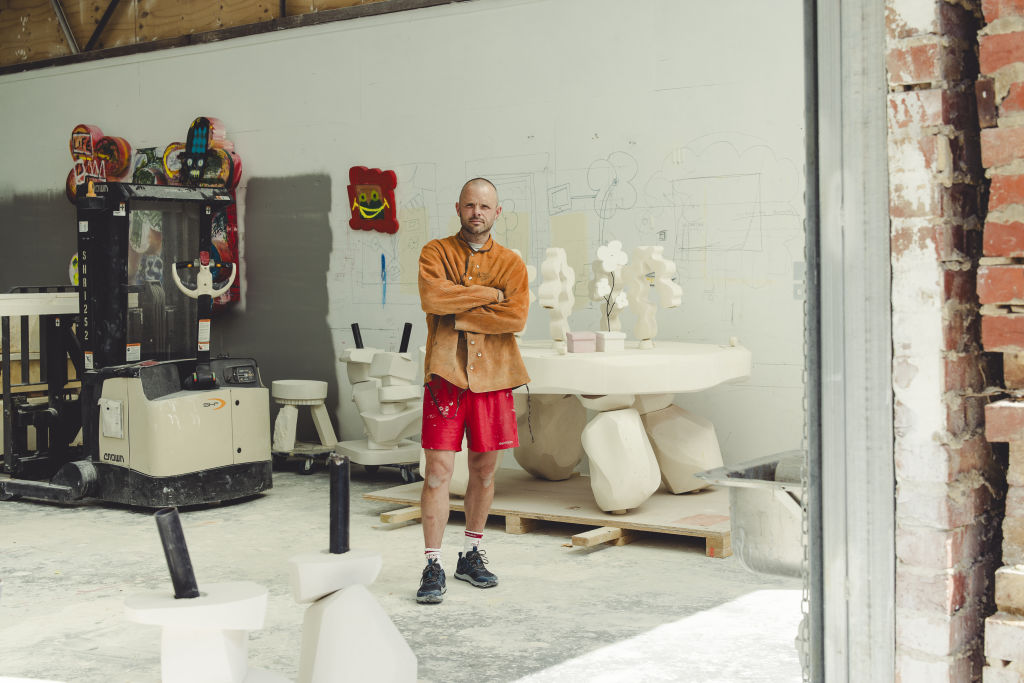
Some people start the day with yoga. Others prefer to read the newspaper. For Melbourne-based artist Steven John Clark, taking morning ice baths has been a gamechanger.
“Once you’ve gotten something out of the way that’s so difficult first thing in the morning, it makes the rest of your day quite easy. It takes away a little bit of anxiety. You feel free and ahead of the game before coming into work,” says Clark, the creative force behind Melbourne art and design studio denHolm.
Named after his tiny hometown in rural Scotland, denHolm produces functional, Flintstones-esque limestone furniture; ’80s-inflected chrome side tables; graffiti-daubed plastic works; and experimental art pieces that seem to borrow equally from Mardi Gras theatricality and brutalist punk.
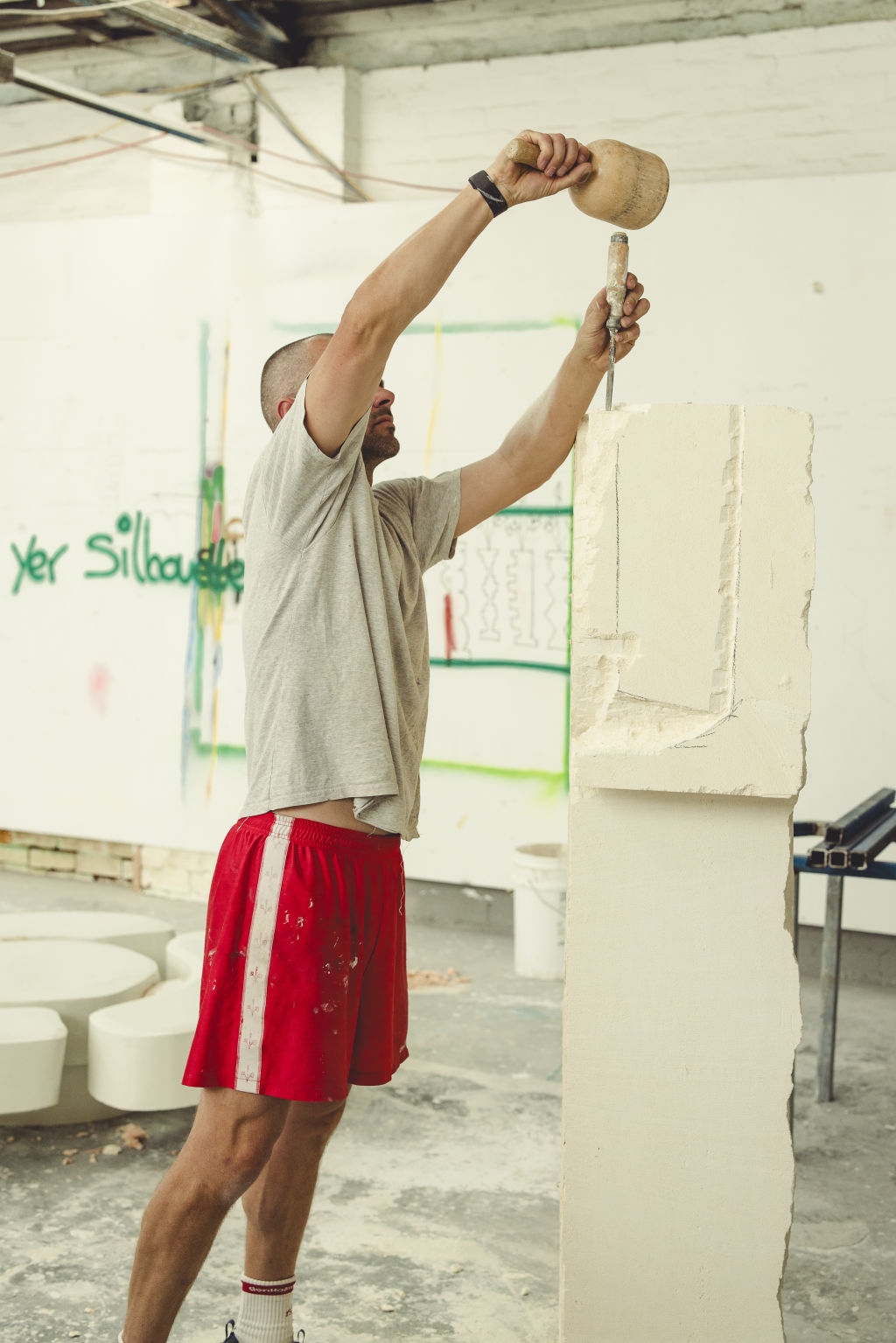
The studio evolved from a small project the Scotsman took on seven years ago. Knowing Clark had apprenticed as a stonemason back home during his teens, a Melbourne friend asked him to make a limestone plinth.
While at the stone yard his wife (artist Bobby Clark) spotted a piece of South Australian limestone she liked. Then the one-off project became something much bigger.
“I decided to play about with that stone, posted it a few times on Insta, and it just took off. The nature of the form and my ability to sculpt it – because it was a soft stone – allowed me to make the shapes that maybe you wouldn’t necessarily see in stone, and here we are today,” he tells Broadsheet.
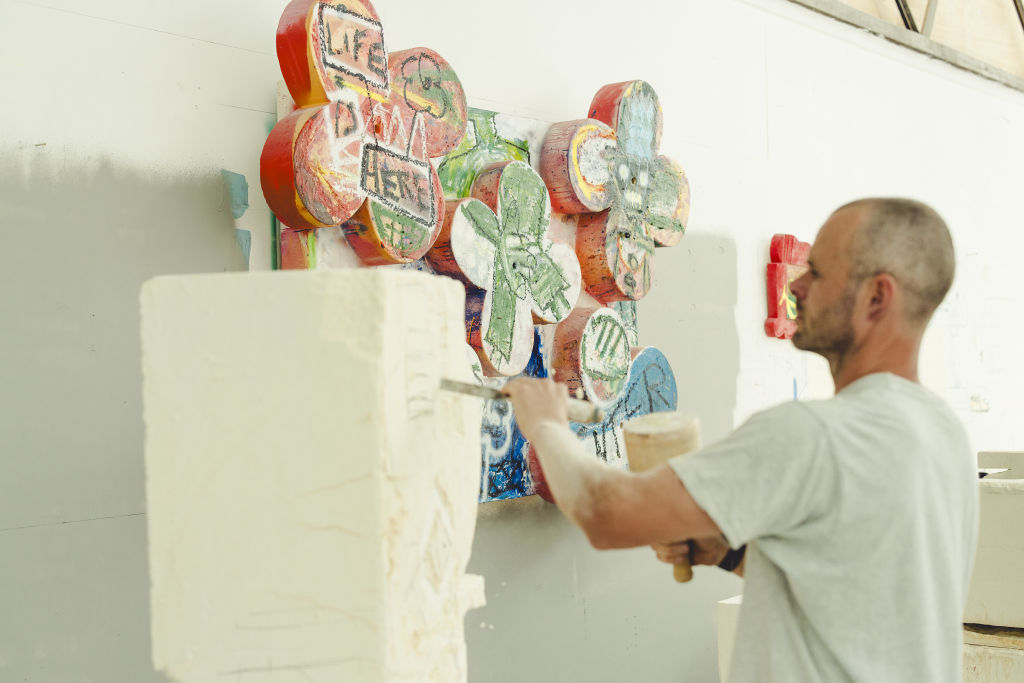
Clark’s work now has a global presence in design galleries such as Charles Burnand in London and Collectional in Dubai. He went from ditching stonemasonry at age 19 to having his stonework acquired by NGV’s Ian Potter Centre. The full-circle journey took a change in attitude, as well as geography.
“I never looked at stone as being creative [back then]. It was always just a means to an end to make money to do other things,” Clark explains, adding that as a teen he was “anti being a tradie”.
 From sportscars to fashion houses, Nick Thomm is bringing his hyper-colourful art to the world
From sportscars to fashion houses, Nick Thomm is bringing his hyper-colourful art to the world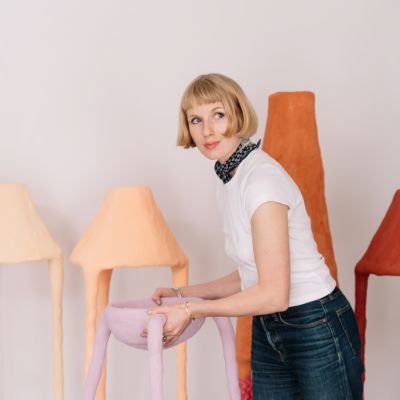 Jordan Fleming’s gangly lamps seem (almost) alive
Jordan Fleming’s gangly lamps seem (almost) alive The butterfly effect: Marisa Mu is making big waves in the art world
The butterfly effect: Marisa Mu is making big waves in the art world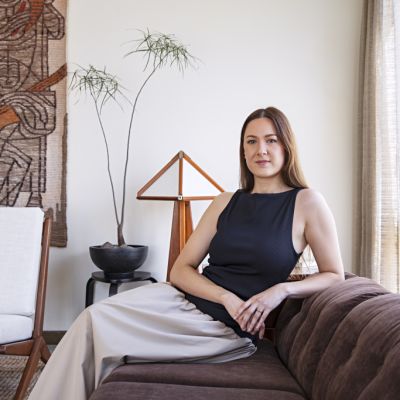 How this Robin Boyd rental inspires Jorja Brown’s vintage furniture business
How this Robin Boyd rental inspires Jorja Brown’s vintage furniture business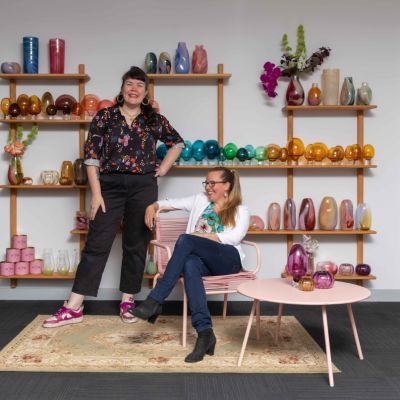 How Hothaus founders Amanda Dziedzic and Laurel Kohut perfected the art of glassblowing
How Hothaus founders Amanda Dziedzic and Laurel Kohut perfected the art of glassblowing
Instead, his younger self pursued a career in fashion. With dreams of being the next Alexander McQueen, Clark swapped stonemasonry for studying clothing and textile design, receiving a degree in embroidery from Manchester Metropolitan University.
“I’d always looked at the world of stonemasonry as being old and boring. And I was going to be working with chiffon and sparkles,” he says.
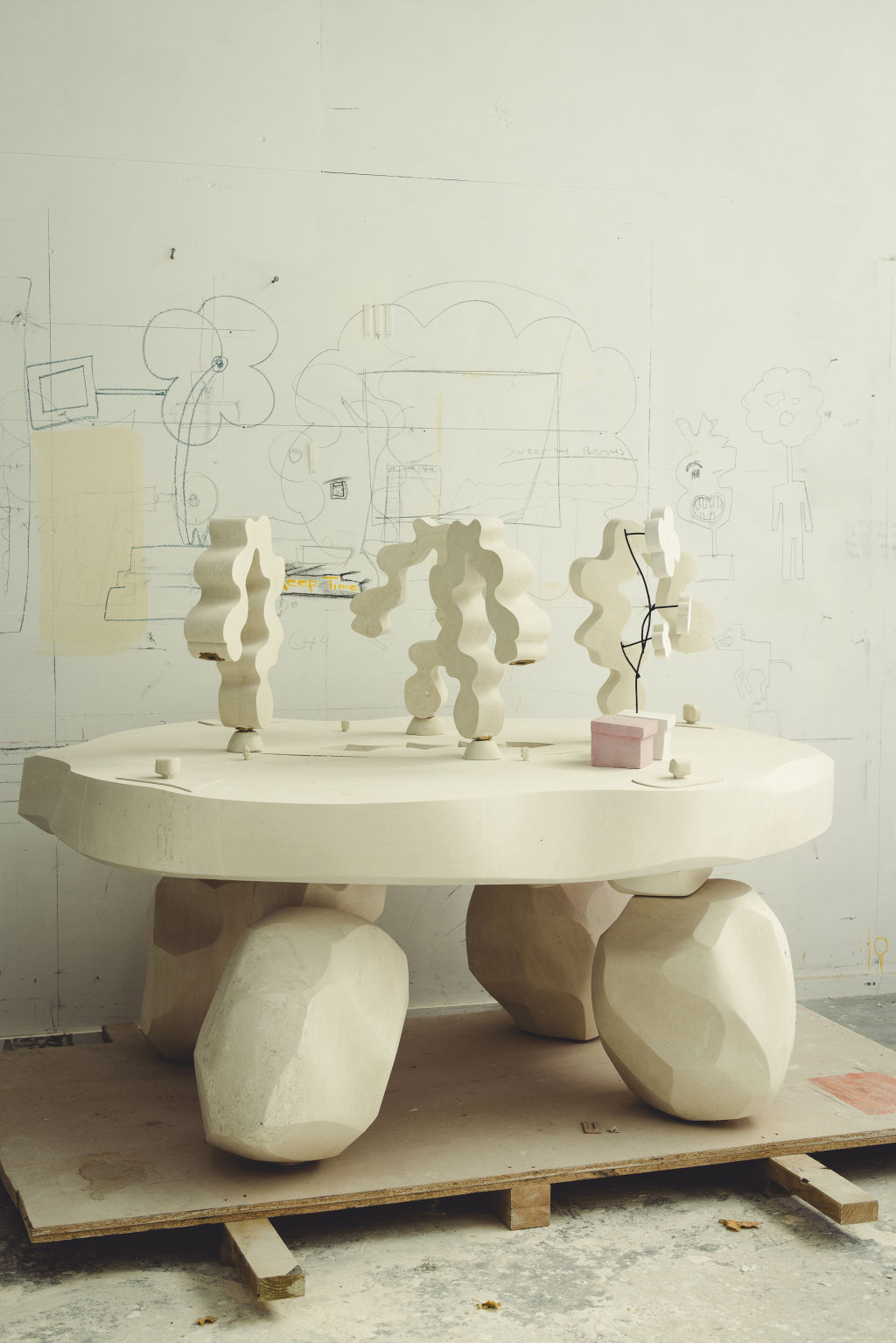
Having dyslexia made written uni assignments a nightmare (“it takes so much mental capacity to put words into paragraphs and remember commas”), but Clark excelled at applying his creativity in practical ways. He remembers having a lightbulb moment after winning competitions and seeing teachers show his sketchbooks in class.
“I knew then that I see stuff slightly different, or I process stuff a little bit different. I didn’t follow. I was quite comfortable not following.”
After moving to Australia in 2010 Clark returned to stonemasonry for work, taking jobs on high-end residential building sites. “I thoroughly enjoyed my time working as a stony,” says Clark, who admits that the solidity of his materials is sometimes at odds with his natural working process. “I’m definitively a procrastinator. I really have to screw my feet to the floor to stay in the same area for long.”
Now Clark prefers to sculpt at nighttime in his Oakleigh South studio. It’s in this playful yet industrious space that he and his small team use a combination of power tools and hand tools (like hammers, mallets and chisels) to shape blocks of ancient limestone into modern furniture and art. Notorious for misplacing his tools, Clark admits he’s now bought multiples of his favourite chisel made in the Czech Republic by Narex.
“Once we’ve sculpted the stone to a desired work … that’s when I’ll harden it with different hardeners and then sand it all back. During that process, we can start to play with the colour of the stone as well because the stone is so porous, it allows us to mix in different pigments,” he says.
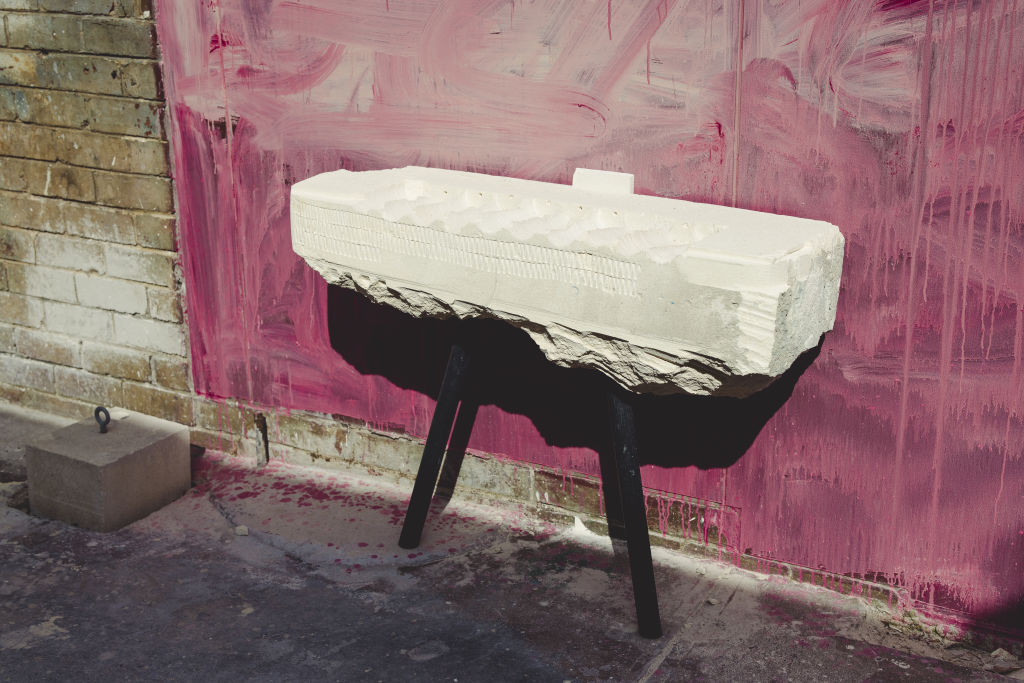
At denHolm Clark works on personal art projects, furniture commissions for clients and anything else he feels like exploring. The result is a distinct body of experimental work sought after by everyone from interior designers to private art collectors. Whether it’s a statement coffee table made for an apartment living room or an abstract sculpture displayed in a contemporary art gallery, Clark’s raw, asymmetrical, often-playful creations all possess a distinct energy and style.
Clark is keen to further denHolm’s reach. Last year he launched a neon fever dream of a website (created in partnership with artist Lars Stoten) that acts as a platform for digital publication Gazette – which also appeared in zine form at Art Basel Miami Beach 2023.
Then there’s the online retail gateway selling a madcap range of items from a $60 limited-edition vinyl record by English music duo Sleaford Mods to a $14,350 baseball signed by Michael Jordan. And branded denHolm socks.
The chaotic collection of antiques, curios and merch doesn’t follow the traditional rules of e-commerce. “We wanted a mismatch of stuff at different price points to bring people in. We have quite a fan base and I would say the majority of them can’t afford what we actually make,” he says.
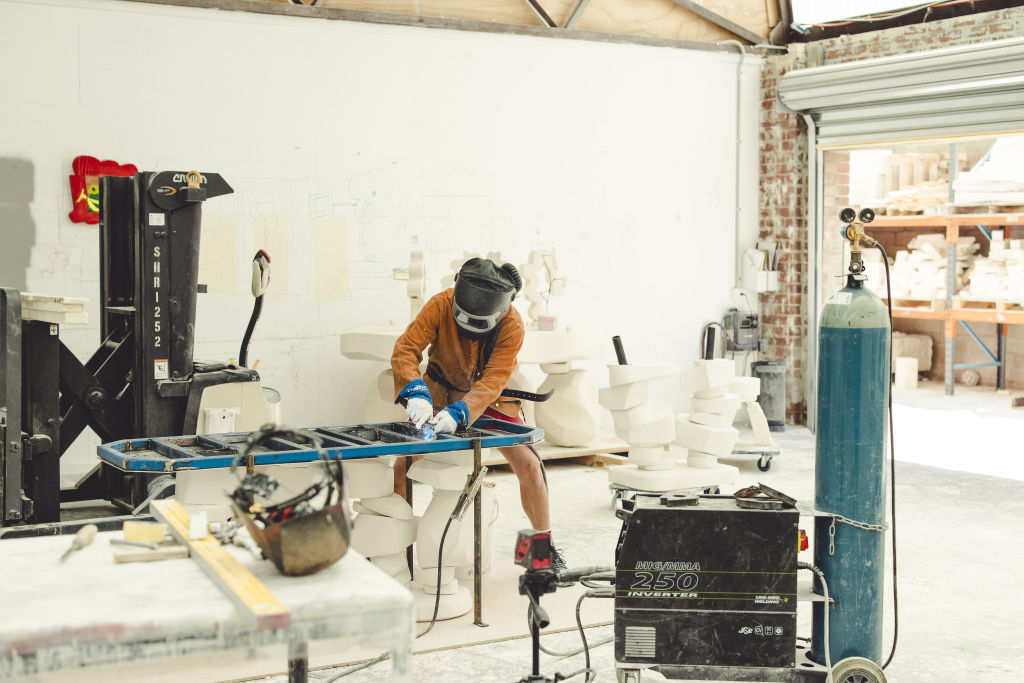
Despite the hectic mash-up of pop culture and design on offer, Clark says he’s most influenced by the built environments he sees and interacts with daily. Lately, he’s been pondering why he prefers some spaces over others.
“The majority of the time, it will be in the detail. It really comes down to just how much time has been spent [on a space]. And that might be time spent in the application of the finish. Or it might be time spent in designing something so minimal and perfectly laid-out that it gives the space a certain feeling.”
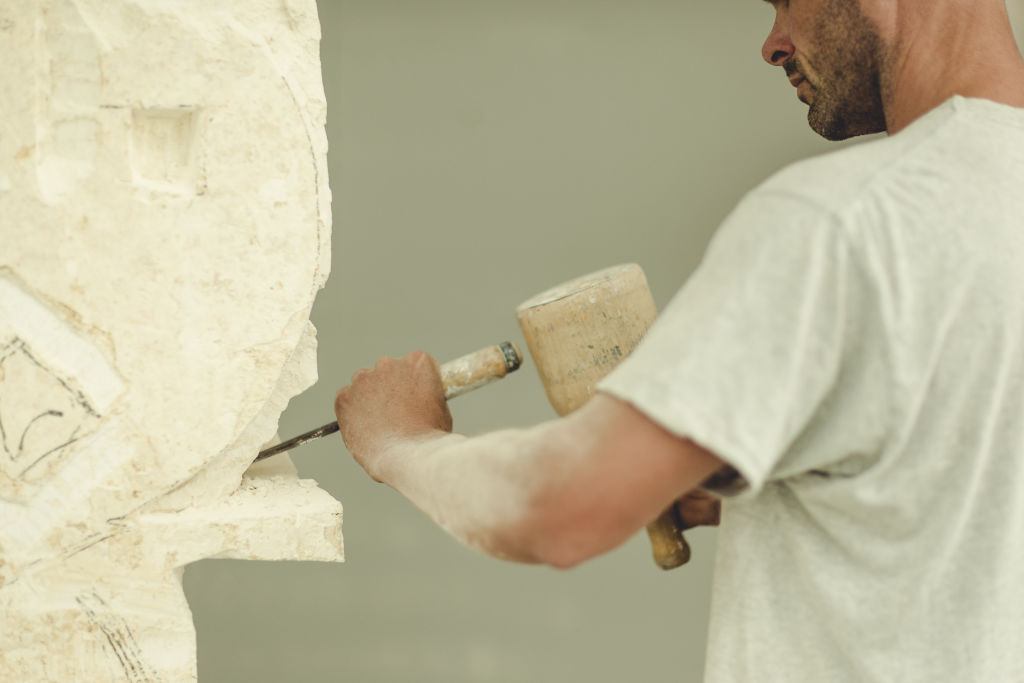
The small, leafy stretch of Lygon Street, Carlton – home to Pidapipo gelato and Readings bookstore – is somewhere he gravitates to.
“It’s only a tiny little pocket, like two streets long. I just feel calm for some reason. I really enjoy the energy and the greenery because the trees are really close together, so there’s a bit of a canopy.”
Clark says that although his wife often tries to pinch his pieces to display in their house, he thinks it “feels weird” to be surrounded by his own work at home. Logistically there’s another reason why some of his monolithic creations haven’t made it there.
“We live in a Thornbury weatherboard shack that’s literally falling to pieces, and I don’t think the floor could handle a stone dining table,” he laughs.
This article first appeared in Domain Review, in partnership with Broadsheet.
We recommend
We thought you might like
States
Capital Cities
Capital Cities - Rentals
Popular Areas
Allhomes
More







